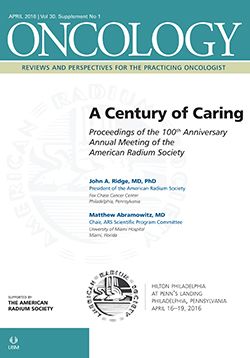(S024) Axillary Lymph Node Coverage With 3D Tangential Field Irradiation and Correlation With Heart and Lung Dose
Less than 50% of the level I LN volume was covered by 90% PD; less than 30% was covered by 95% PD. Mean (29 Gy) and median (30 Gy) doses to the level I LN were subtherapeutic. There was a moderate correlation between V20 ipsilateral lung and coverage of level I LNs.
Matthew J. Miller, MD, Nicole Bunda-Randall, MS, DABR, Sijin Wen, PhD, Geraldine M. Jacobson, MD; West Virginia University
PURPOSE: The American College of Surgeons Oncology Group (ACOSOG) Z0011 trial indicated no benefit to axillary lymph node dissection (ALND) following positive sentinel lymph node (SLN) biopsy in patients receiving breast radiation therapy (RT). We evaluated coverage of axillary level I–II LNs using Radiation Therapy Oncology Group (RTOG) contouring guidelines in three-dimensional (3D plans) and correlation with V20 ipsilateral lung and mean heart dose (MHD).
MATERIALS AND METHODS: We evaluated 50 CT-based tangential breast plans. Axillary level I–II LNs were contoured using RTOG guidelines. Volumes of level I–II LN regions covered by 90% and 95% of the prescription dose (PD) were calculated. Pearson correlation method and linear models were used in the correlative study.
RESULTS: Level 1 LN mean and median volume (MMV) covered by 90% of the PD was 46.8% and 47.2%, respectively (8.77%–88.95%); MMV covered by 95% of the PD was 30.8% and 29.62% (0–82.9%). Mean and median doses to the level 1 LN were 29.03 Gy and 30.13 Gy, respectively (5.47–46.74 Gy). MMV of level II LN covered by 90% of the PD was 2.49% and 0%, respectively (0–32.98%). Mean and median doses to the level 2 LN were 6.09 Gy and 2.12 Gy, respectively. Mean and median V20 ipsilateral lung were 6.73% and 6.7%, respectively (0.018%–22.9%). For left breast patients (20 of 50), mean and median MHD were 1.39 Gy and 1.24 Gy, respectively (0.48–5.10 Gy). We noted a moderate correlation between 95% prescription coverage of level 1 LNs and V20 ipsilateral lung (Pearson correlation = 0.51; P = .0001) and a smaller correlation between 95% prescription coverage of level 1 LNs and MHD (Pearson correlation = 0.49; P = .029).
CONCLUSION: Less than 50% of the level I LN volume was covered by 90% PD; less than 30% was covered by 95% PD. Mean (29 Gy) and median (30 Gy) doses to the level I LN were subtherapeutic. There was a moderate correlation between V20 ipsilateral lung and coverage of level I LNs.
Proceedings of the 98th Annual Meeting of the American Radium Society- americanradiumsociety.org

Targeted Therapy First Strategy Reduces Need for Chemotherapy in Newly Diagnosed LBCL
December 7th 2025Lenalidomide, tafasitamab, rituximab, and acalabrutinib alone may allow 57% of patients with newly diagnosed LBCL to receive less than the standard number of chemotherapy cycles without compromising curative potential.